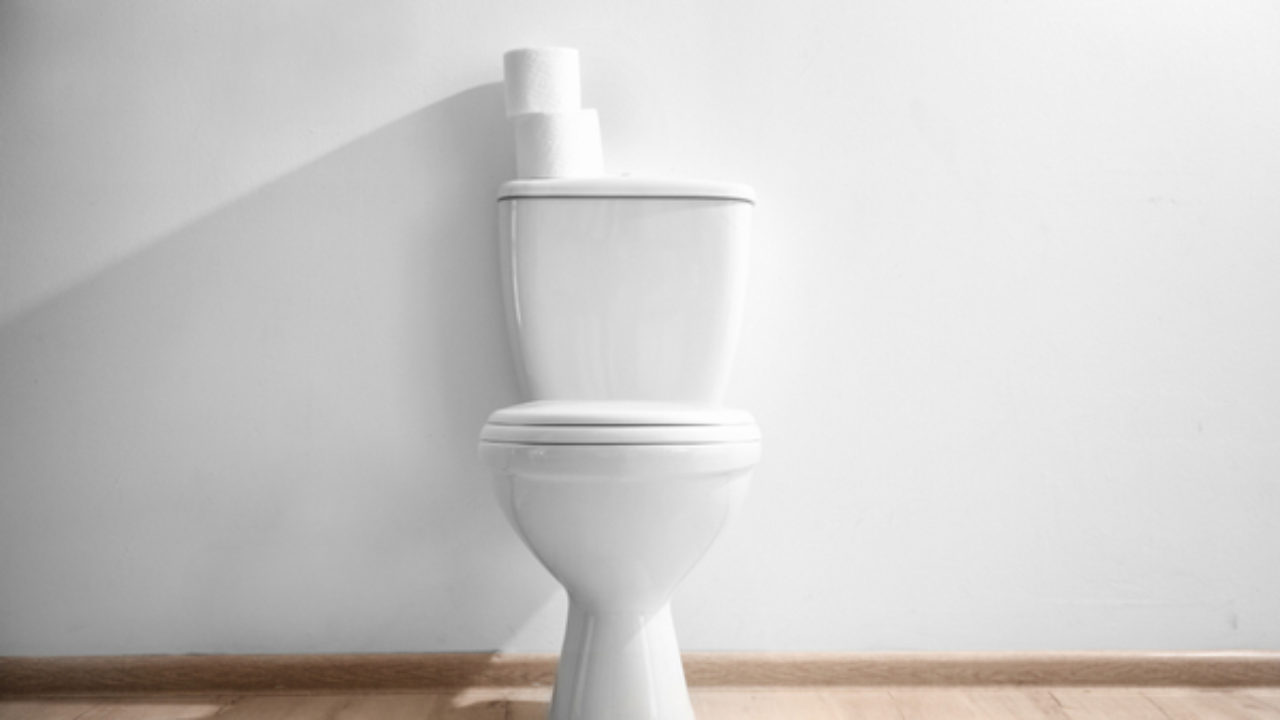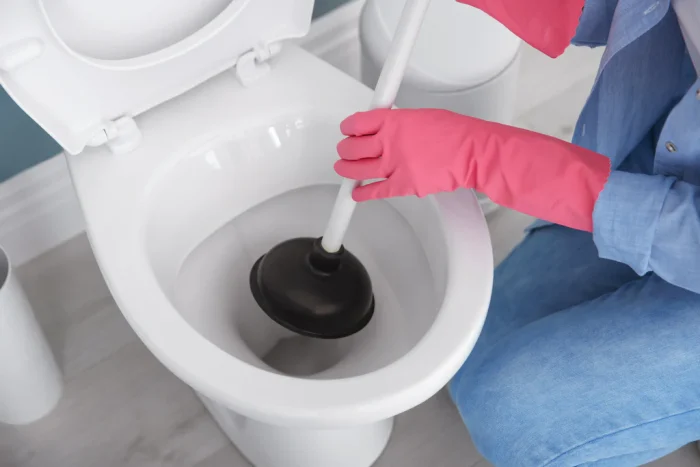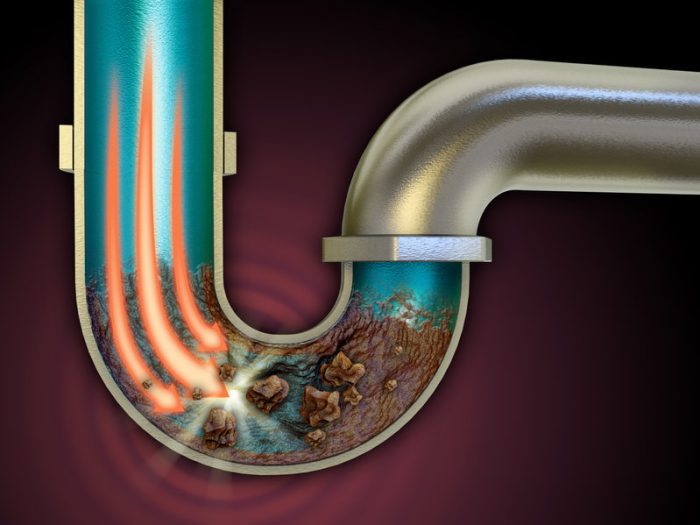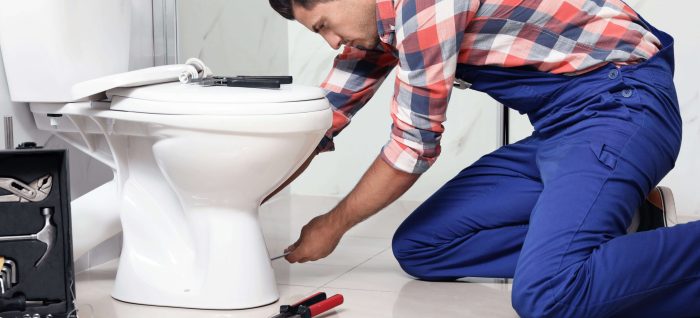
We all prefer toilets with a strong flush, and for a reason. They do their job of waste removal quickly and steadily and are not so expensive. Due to WaterSense standards and new technologies, toilets don’t require as much water as half a century ago. But what can you do if your toilet starts to flush slower than before? Should you buy a new one, or at least call a plumber? Don’t hurry. There are methods to fix any possible problems yourself.
These DIY tricks require nothing your household doesn’t already have and don’t take much time or skill. It doesn’t mean that they always work, but why not try? In many situations, a simple plunger removes the problem, and other methods are nearly as easy if you try them.
How Does Your Weak Flush Show?
Basically, there are 2 different causes behind a slow flush which can be told apart by a simple look. You have probably experienced both of them, but let’s these possibilities.
- Input problems. The issue is between the water supply and the bowl (usually in the tank), so the stream is too weak to move the waste away.
- Output problems. The issue is between the bowl and the drain system, usually somewhere in the pipe. It can be a partial clog or sediments on the pipe that reduces its diameter and slow down the flush.
Telling them apart is easy. If the water leaves the bowl quickly after you push the button or pull the level, it’s the former. If it stays in the bowl for a while, it’s the latter. In both cases, the problem can be within your reach as well as beyond it.
Simple Methods of Fixing the Flush

The options of flush systems are numerous, but usually, they all have a built-in mechanism for adjusting the water level. It can be found in the manual, but they are written for the particular model they come with. Instead, some generic rules help you adjust the water level if the flush has gone wrong.
- There is always an element defining the water level. It can be a flapper or a float cup that can be moved and then fixed in place. Open the tank and see if the level is below usual; the usual level can be seen on its walls inside.
- If there is a floating ball on a rod, bend the rod a little allowing the ball to float higher.
- For a diaphragm ballcock, use a screwdriver to turn the special screw on top and raise the water level as the manual says.
- For float-cup mechanisms, you can loosen the fixing screw, adjust the level of the cup, and then tighten it again.
- For QuietFill mechanisms, turn the head of the fill valve counterclockwise, adjust the level, and then turn it clockwise again.
There are more detailed instructions in the manuals for your toilet model. Yet, as you can see from these generic tips, neither special skills nor tools are required.
Simple Devices for Cleaning the Pipes
If you prefer mechanical methods to chemical ones, you have reasons. Mechanical cleaning is usually faster and provides immediate feedback. It has its pros and cons, but when it comes to here-and-now troubleshooting, you better get in touch with those clogs. The most popular devices for cleaning the pipes are the following:

- A plunger. Each household should have one or more. It’s designed to make huge pressure difference when put in and then out, so the pressure from the outside will move the clog and, in many cases, break it. A plunger is easy to use and helpful far beyond its price.
- A drain snake. It helps to break clogs in your U-shaped traps where they form most often. You can make it out of a coat hanger if you straighten it, making something of a handle on one end and leaving the hook on the other to break clogs more efficiently. Also, a drain snake can be made of steel cable or thick wire.
Household Chemicals for Cleaning the Pipes
If the problem is not a clog but the buildup on the walls of the drainpipe, you can try to dissolve it with chemical solutions. The substances you will need are rather aggressive, but surely you have them in your kitchen. The simplest recipe possible requires just 2 of your everyday chemicals. Mix them like this:
- Vinegar – 240 ml (8 oz)
- Baking soda – 1/2 cup
- Liquid soap (optional) – 2 tbs
- Essential oil (optional) – 10 drops
The mixture should start fizzing up once you combine the first two ingredients. If it does, it indicates that you’re doing everything correctly.
When Do I Call a Plumber?

Well, if these methods do not work, the problem is too serious for an amateur to handle. So there is no other way out but to call a plumber. But at least you know you’ve tried. And if something happens again, but on a lesser scale, you’ll have chances to figure it out and solve the problem on your own.
If you decide on reaching out for help, though, don’t linger. And if the plumber asks you what you have tried, tell the whole truth. By calling a plumber, you have already admitted you’re not one yourself. It may save both your time and money; honesty pays even if you don’t want to admit you have failed at solving it or done something wrong. It’s like speaking to your doctor about your bad habits: hiding them may make your treatment harder, longer, and more expensive.
There are numerous reasons for slow-flushing toilets. But many of them allow for a DIY solution. If you are ready to get your hands dirty, it won’t take long; neither will it hit your wallet. Knowing simple workarounds may be very helpful, given the urgency of the matter. We hope you’ll never get into such trouble, but if you do, you better be ready.














